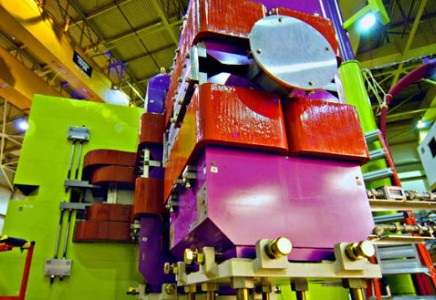Nuclear Physics

An experimental hall detector.
Additional Links
Scientists from across the country and around the world use the Thomas Jefferson National Accelerator Facility to advance mankind's understanding of the atom's nucleus.
To probe nuclei, scientists use continuous beams of high-energy electrons from the lab's Continuous Electron Beam Accelerator Facility, or CEBAF, and the advanced particle-detection and ultra-high-speed data acquisition equipment in CEBAF's four experimental halls.
Jefferson Lab has both theoretical and experimental physicists. Theorists discover and interpret theories of matter, such as Quantum Chromodynamics, while experimentalists design, conduct and interpret results from experiments to test theories of matter.
In addition to scientists on staff at Jefferson Lab, more than 1,300 other visiting scientists and students from the U.S. and abroad conduct research at the lab. These non-staff scientists and students are known as users.
To learn more about the specific experiments carried out at Jefferson Lab, see Recent Experiments. To learn about the benefits nuclear physics research provides to society, the Department of Energy has prepared a brochure, Accelerating Innovation.

